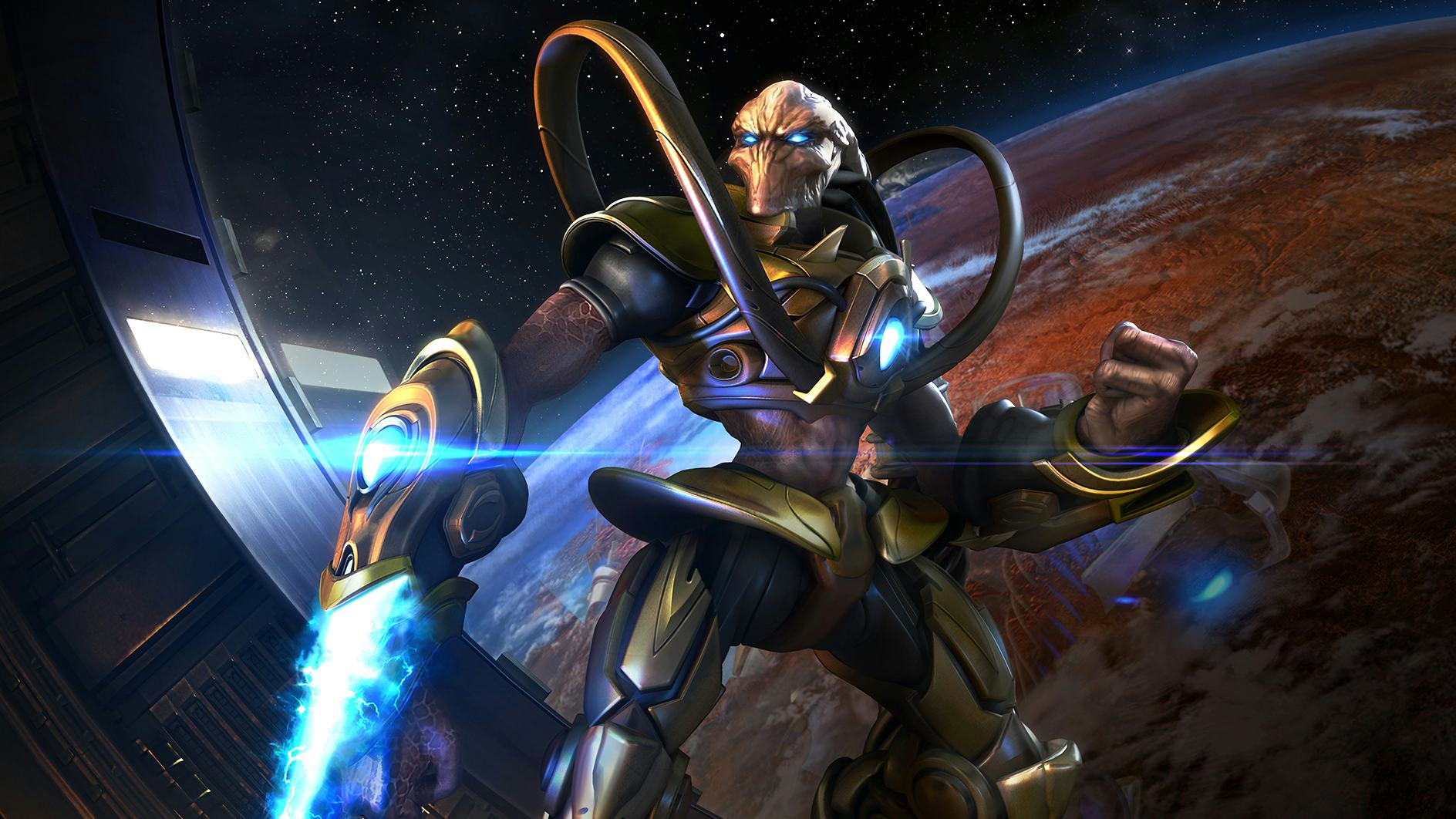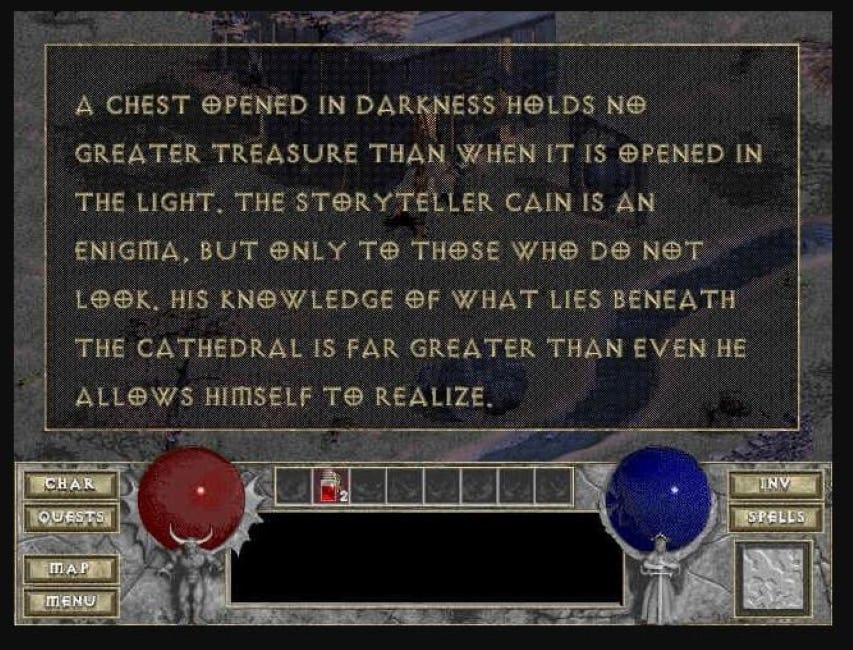
It’s hard to change the world. This doesn’t stop people from trying, whether it's inventions or art or villainy. Still, it’s rare to set out to change the world and succeed. The things that most often shape our lives and futures have humble origins. When StarCraft was released in 1998, no one could have predicted it would forever change strategy games, gaming culture, and an entire country.
We know it is an all-time great now, but the story of StarCraft is typical of a lot of ‘90s game dev stories. In short, it’s kinda messy. In the early ‘90s, Blizzard saw an opportunity to break into the real-time strategy (RTS) genre after members of the studio got hooked on one of the earliest RTS games for PC, Dune II. It led to the first of several key franchises for the company: WarCraft.
Although they were fans of Dune II, the team at Blizzard also saw the game through a critical eye and realized there was room for improvement. For example, Dune II only lets players select one soldier at a time. Instead, Blizzard implemented grouping units, a ubiquitous feature in the genre now, in their first strategy release WarCraft: Orcs and Human.
Steeped in fantasy tropes, the orc vs human setup of WarCraft and its sequel WarCraft 2: Tides of Darkness proved to be a hit with fans. The games sold millions of copies and put Blizzard on a path to being one of the premier studios developing games for the PC. Unfortunately, they were not the only game in town (pun intended). By the time WarCraft 2 was released, the real-time strategy genre was experiencing a boom thanks to an expanding PC audience.
Blizzard’s first reveal of StarCraft was a flop. The studios rushed to put the concept together using the WarCraft engine in order to have a demo ready for E3 1996. It was not well-received by fans or the media. A gaudy color scheme, stale mechanics, and lack of a narrative hook caused fans to see it for what it was, a rushed project. So what did Blizzard do next? It decided to go to hell.

No, literally, that’s what Blizzard did.
In 1996, the company focused nearly all its resources on an ambitious new title called Diablo. A project acquired when Blizzard purchased Condor, soon to be renamed Blizzard North, the hack-and-slash dungeon crawler has itself become a tentpole franchise. It wasn’t easy to develop; however, the shift in priorities left the StarCraft team with only a few members and a mandate to start over.
They built an entirely new game engine for it and honed both the artistic and narrative visions into something that felt like top-tier science fiction. This included cinematic cutscenes made in-house, another big step forward for the industry and one of the hooks that drew fans deep into the franchise.
Much like with WarCraft, the innovations in StarCraft upended a now-oversaturated RTS scene. The campaign consisted of three playable factions that, unlike other RTS titles of the era, each played differently. Typically the differences in RTS factions were cosmetic, but in StarCraft the Terran, Zerg and Protoss all had unique armies with their own strategies. It may seem like an obvious thing with 25 years of hindsight behind it, but it was a huge leap forward. Especially because players were able to hone those strategies against one another online.
Blizzard developed a cutting edge online arena with its battle.net service. While PC gamers were able to play online before battle.net, it wasn’t easy. And battle.net made the process painless because it was already built into the software for Blizzard games. It was simple to create an account and login, which made it incredibly popular. Nowhere was it more popular than South Korea.
South Korea became the global leader for internet connectivity in the mid-90s thanks to robust investments in an infrastructure that gave its citizens access to the fastest internet speeds on the planet. They put it to good use by playing games. A lot. An economic recession in the mid-90s caused a lot of business owners to rethink their storefronts. Many began opening up hybrid arcade/internet cafes, known as PC Bangs, that allowed gamers to come in and purchase playtime on good PCs at a reasonable hourly rate.
Unlike the U.S., which had an install base that depended on people buying costly PCs for home use, South Korea’s burgeoning internet culture gave Blizzard millions of potential customers. And because Japanese media was banned in South Korea due to Japan’s imperial occupation/war crimes, American-owned Blizzard had less competition. As the popularity of StarCraft grew, another landmark gaming first occurred thanks to a kid’s TV station called Tooniverse.
Tooniverse aired lots of cartoons but, more importantly, began airing StarCraft matches in 1998. It was the precursor to esports and the competitive gaming scene. When StarCraft devs visited Korea for the first time they were amazed that everyone seemed to know the game the way most Americans know football. As the game evolved, and the inevitable sequel StarCraft II released, the scene grew to massive heights. StarCraft is still among the most played games in Korea to this day, and everything from League of Legends to Twitch owes a debt to the battle.net experiment and the dedication of Korean fans.
It’s hard to overstate the impact StarCraft has had on games and gaming culture. It redefined the RTS genre upon release, popularized online multiplayer (and set an industry standard) with battle.net, and leveraged a cultural phenomenon in Korea into a global esports movement now worth billions. Twenty-five years from now we’ll still be talking about it. And maybe we’ll even see StarCraft 3 by then, too.







